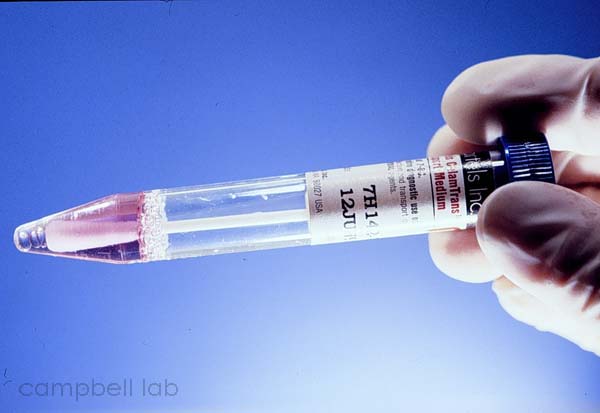|

Lab
Diagnostic Testing: Herpes Simplex Virus
In our laboratory, all clinical ocular samples suspected of possible HSV infection are tested with PCR only.
Specimen
Collection
Specimens are directly collected by vigorously swiping the exposed conjunctiva with a plastic soft-tipped applicator. Cornea samples
using soft-tipped applicators and spatulas can also be obtained to maximize the yield of viable HSV and antigen. Topical anesthetic
can be applied to the conjunctiva and should be applied to the cornea. Collected samples are placed in 2.0 ml of Viral Transport Media (VTM).
All laboratory testing can be processed from the 2.0 ml of Viral Transport Media (VTM). HSV can be fastidious and should be transported to the laboratory without unnecessary delay.
Transport medium
(Click on image to enlarge)
 |
PCR
PCR is performed for HSV (1 or 2) on specimens collected by soft-tipped applicators, metal spatulas, or jeweler's forceps, and placed in 2.0ml of Viral Transport Media (VTM). Intraocular fluid or vitrectomy specimen can be supplied directly for PCR testing.

|